ARABESQUE
Arabesque – an ornament derived from ancient Greco-Roman art. It is a form of artistic decoration consisting of a plant ornament in the form of stylized plant garlands, often accompanied by additional elements (e.g. elements of armour, fruit, human figures). Arabesque can be found in architecture, crafts, less often in painting and is mainly used to decorate empty spaces. It travelled from Europe to the Islamic world, where its form became highly over-stylized. It re-gained popularity during the Renaissance and Classicism.
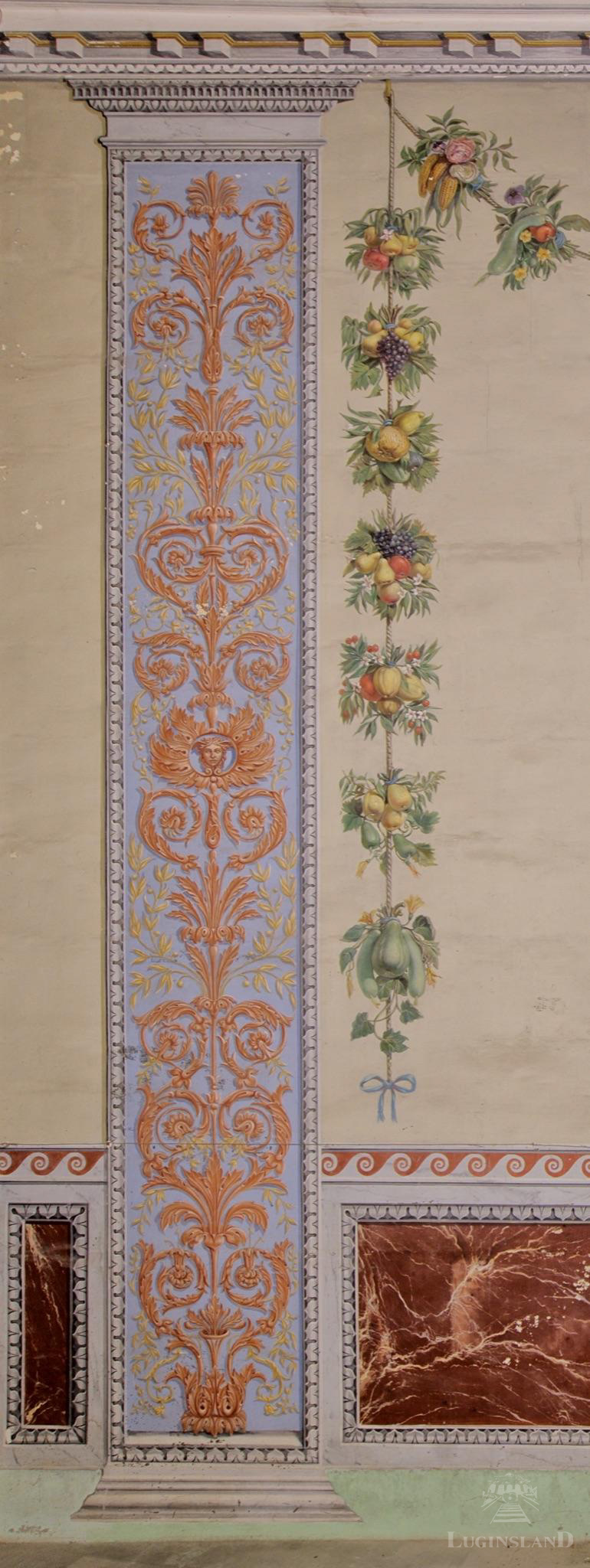
Villa Luginsland
Image: ®Luginsland Limited
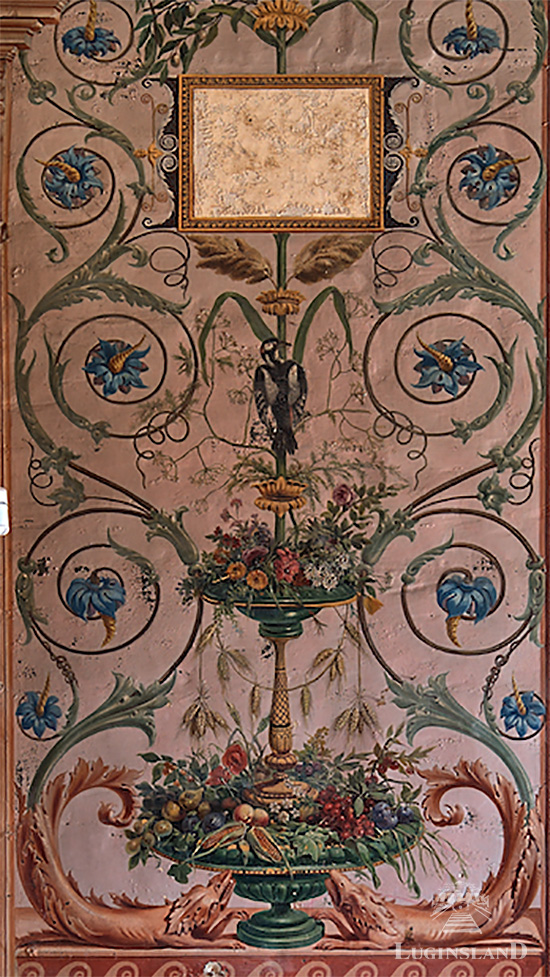
Villa Luginsland
Image: ®Luginsland Limited
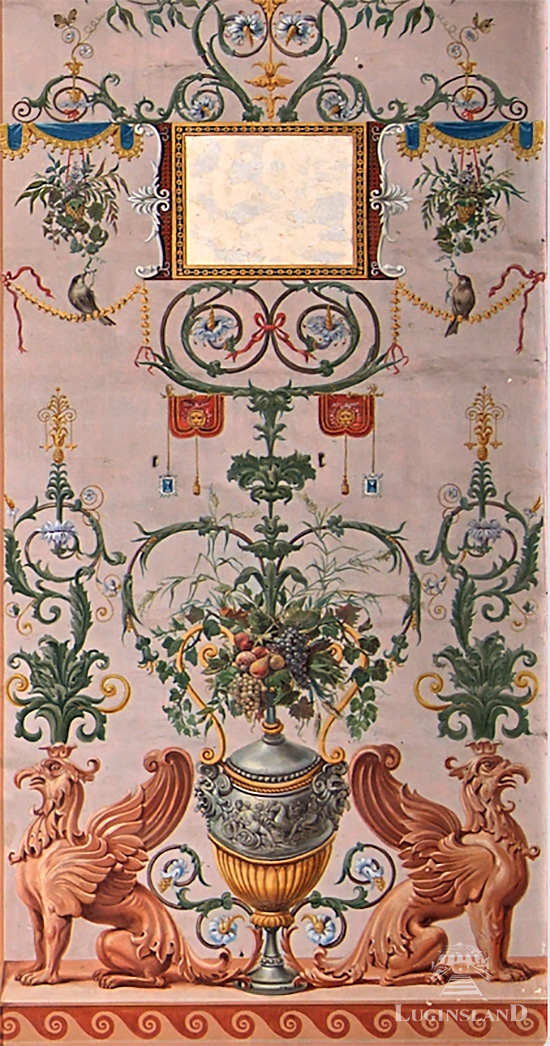
Villa Luginsland
Image: ®Luginsland Limited
The aforementioned “decorative base” was enriched by Cali with single elements of 17th-19th century ornamentation. (Ornamentation of the seventeenth and nineteenth centuries reinforced and presented the figures of people and animals more clearly). The “French- German” origin of the decorative ornaments can be observed in the patterns which were also typical of the arabesques and grotesques found in the interiors of different Renaissance properties in France and Germany. The Italian origin is indicated by the patterns taken from the Vatican decorative ornaments.
The analysis of the ornamentation suggests that Cali was inspired by the wall paintings and motifs which can be found in:
– The living room of Laurent Grimond de la Reyniere’s apartment – rue Boissy d’Anglas in Paris (part of the now-defunct Hôtel Grimod de La Reynière, bought in 1928 by the American government, and razed to the ground for the construction of the US embassy. However, the interior design of the hotel is known to us thanks to the projects of Jan Chrystian Kamsetzer;
– The interiors of the courtyard of the town hall in Florence (Palazzo Vecchio Firenze) – by Michelangelo Buonarroti;
– The arcades of the Apostolic Palace ornamented with wall paintings by Raphael Santi;
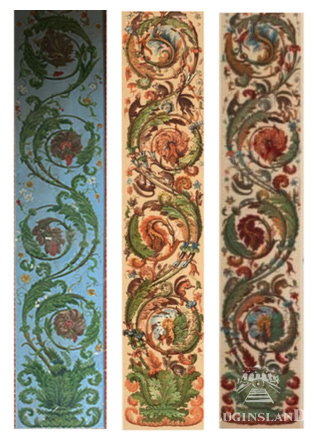
Left: Villa Luginsland
Cenrtal: Italian Renaissance
Right: Italian Renaissance
Villa Luginsland, Italian Renaissance.
Pattern from the fireplace lounge compared with patterns from Renaissance design cards.
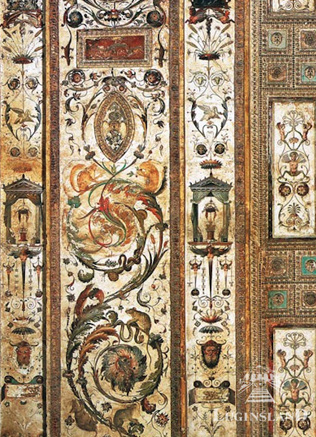
Raphael – piece painted in 1517-19, the Vatican Palace, Italy
Etching and engraving (artistic techniques) contributed to the rapid spread of copied or reinvented grotesque patterns and were used to represent motifs in murals, tapestries, elements made with the use of gold or silver, and even ceramics. In the following century, in line with the principles of French classicism, symmetry and harmony took over grotesque patterns. After the magnificent 16th century and the discovery of Herculaneum and Pompeii, the 18th century gave this ornamentation style a fresh impetus. In the 19th century, however, grotesques were much less common.
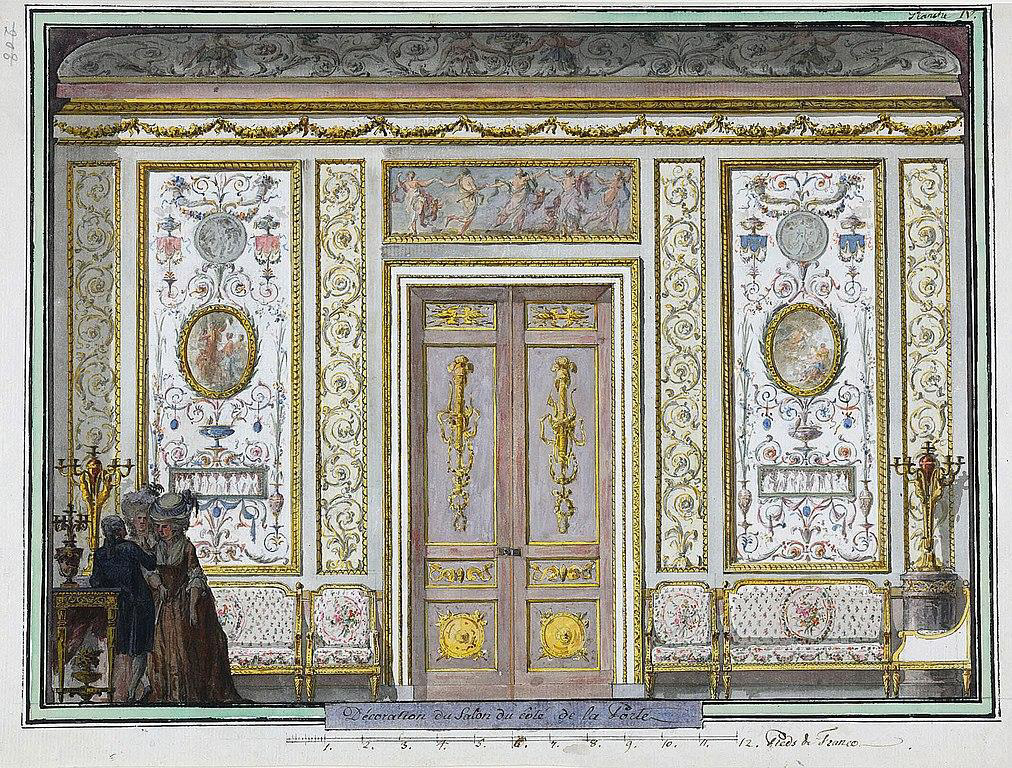
Hôtel Grimod de La Reynière
Image: Author: Jan Christyan Kamsetzer (1753-1793), Drawing preserved in the Department of Drawings, Library of the University of Warsaw, Poland
POSSIBLE INSPIRATION PATHS
The polychromatic wall paintings decorations in the main longue are very similar to the painting compositions made in 1779-1782 by Charles-Louis Clérisseau and La Vallée- Poussin.

Panels in Hôtel Grimod de La Reynière
Image: Clérisseau, Charles-Louis (designer), Lavallée-Poussin, Etienne De (historical painter), Clérisseau, Charles-Louis (decorative painter). collections.vam.ac.uk
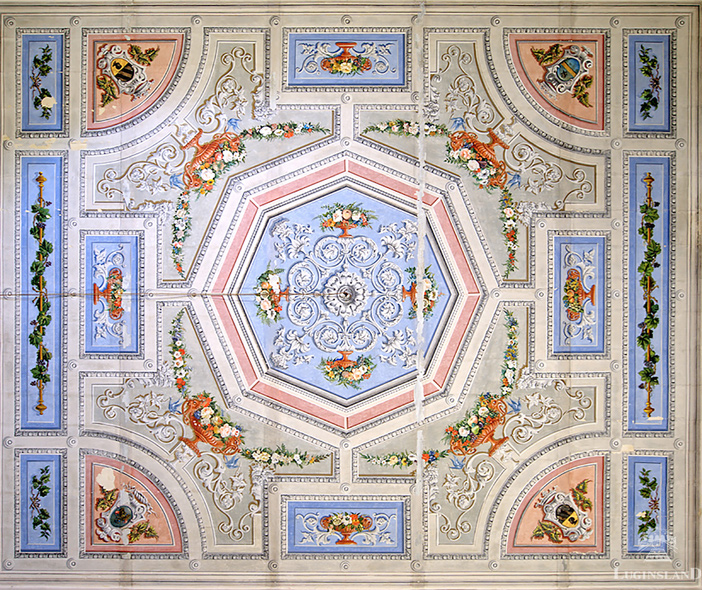
Villa Luginsland – ceiling decoration on the first floor, the Tucher family coats of arms in the corners.
Image: ®Luginsland Limited
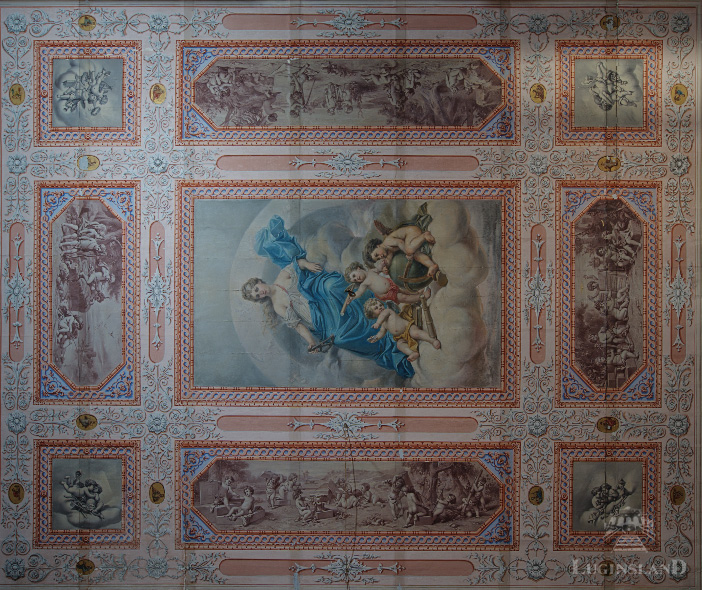
Villa Luginsland – ceiling decoration on the first floor.
Image: ®Luginsland Limited
Baroque scenes with little angels. The woman is probably Maria Victoria, the Baron’s wife, as evidenced by the initials present in the caption of the lower polychrome painting. The composition, which incorporates astrological motifs (and the astrological signs in the background), is a reference to everything the Baron was fond of. The polychromatic wall painting decoration can be found on the ceiling in the living room on the first floor. The painting is surrounded by a decorative ceiling imitating coffers whereas the walls emphasize the richness of colours and the ornamental character of the room.
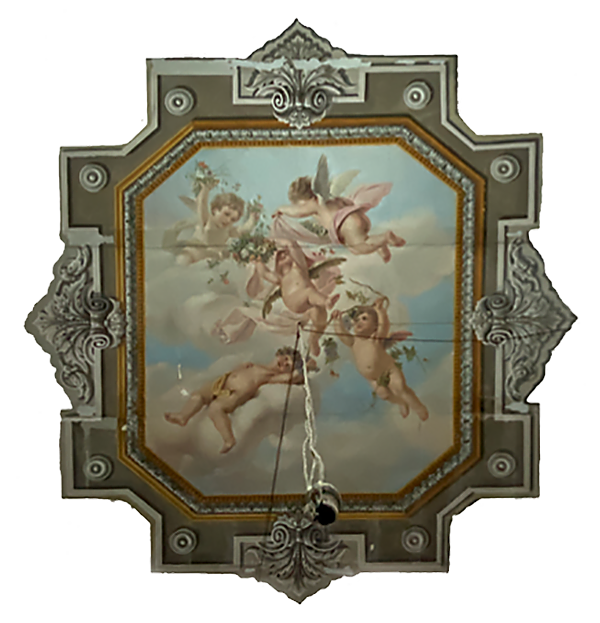
Villa Luginsland – ceiling decoration
Image: ®Luginsland Limited
The second floor bedroom houses a Baroque ceiling polychrome paintings depicting a scene of little angels combined with floral motifs. The fact that there are no other decorations on the walls is rather puzzling, as the presented motif is essentially quite decorative.
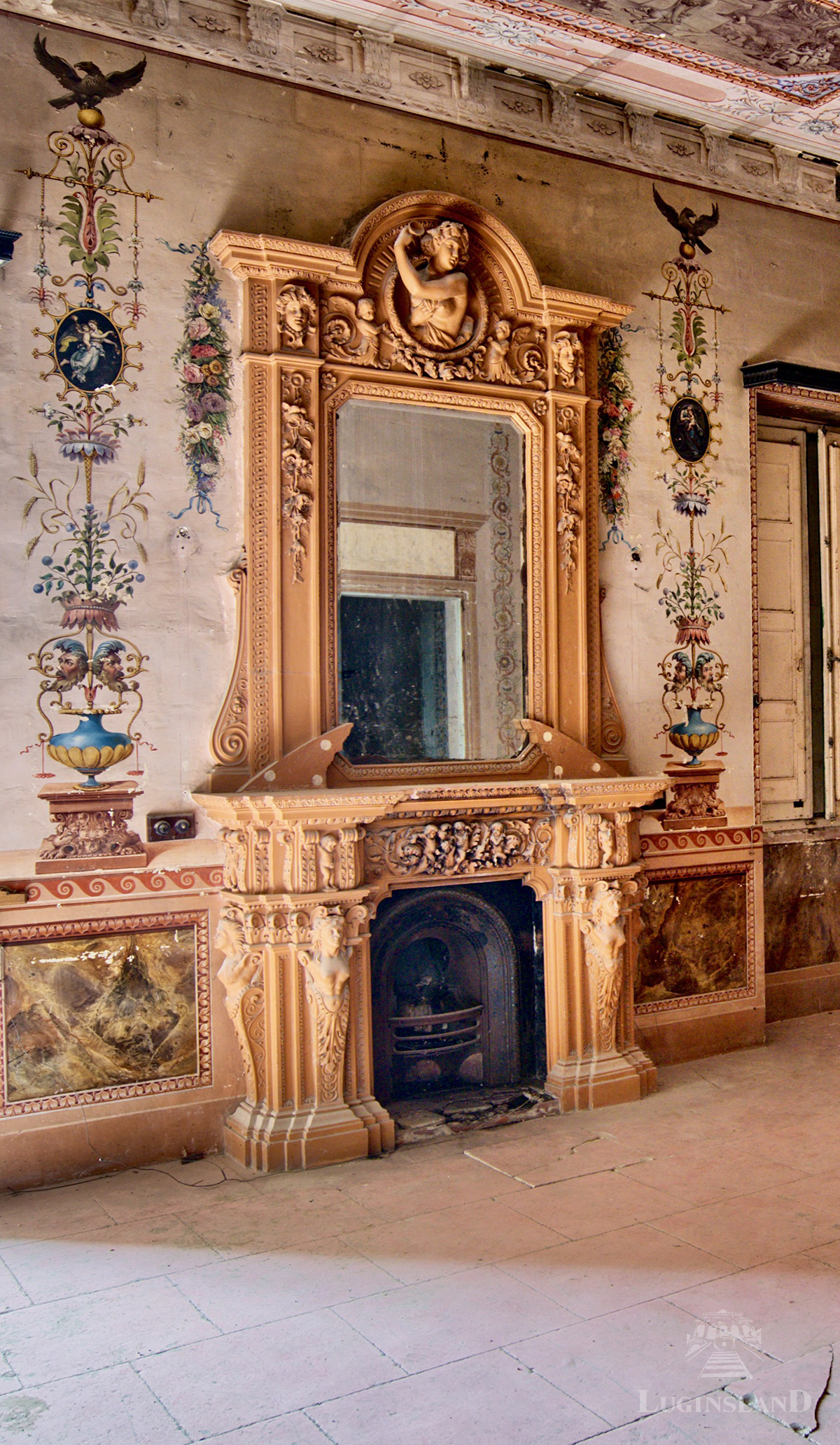
Villa Luginsland
Image: ®Luginsland Limited
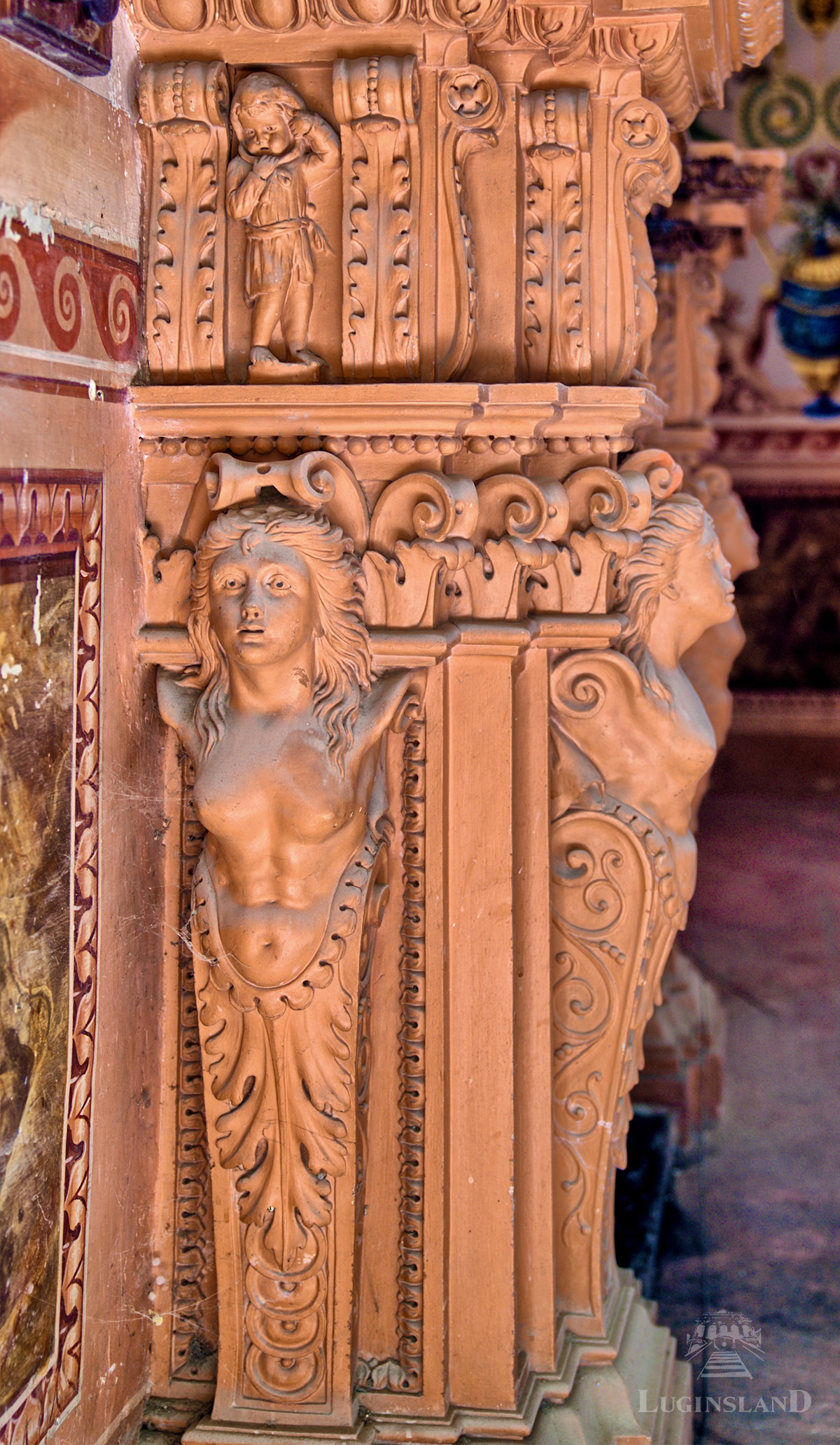
Villa Luginsland
Image: ®Luginsland Limited
The neo-renaissance fireplace in the main living room is just as interesting as the polychromatic wall paintings decorations. It was inspired by the French Renaissance and has an open hearth.
FLOORS
Decorative ceramic floors constitute an adornment and an indispensable element of the Mediterranean and classical styles. What is interesting, is the use of through-body coloured ceramic tiles (production technology), which were commonly produced and used in the German interior design. The floors in the complex are covered with many different patterns of tiles. This type of cement tiles is still produced in German factories today, so a specific pattern can be ordered to fill in the missing pieces.
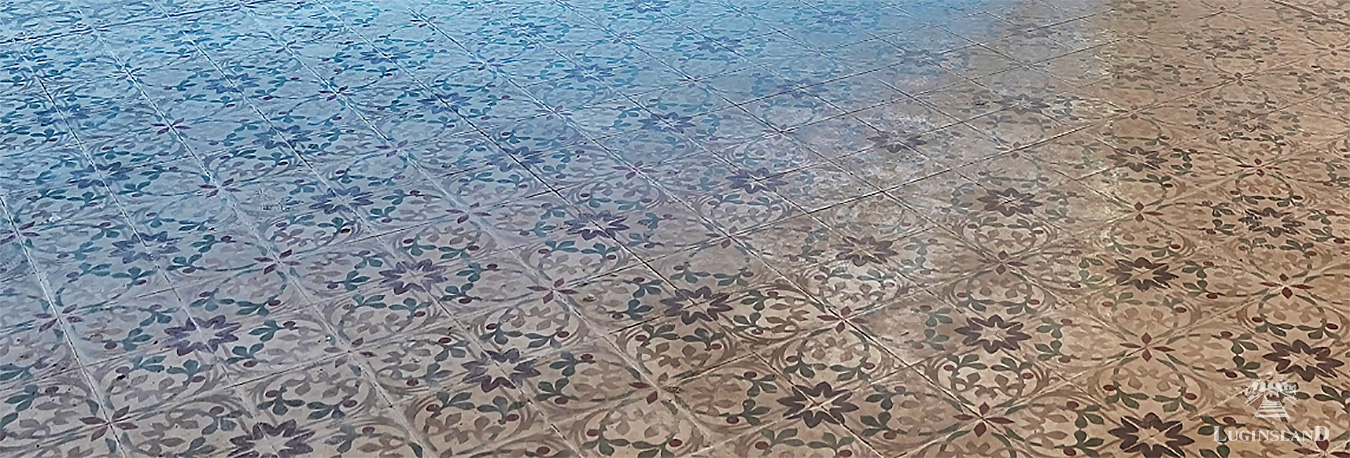
Villa Luginsland
Image: ®Luginsland Limited
On the second floor, 20 x 20 cm cement tiles with floral patterns were used.

